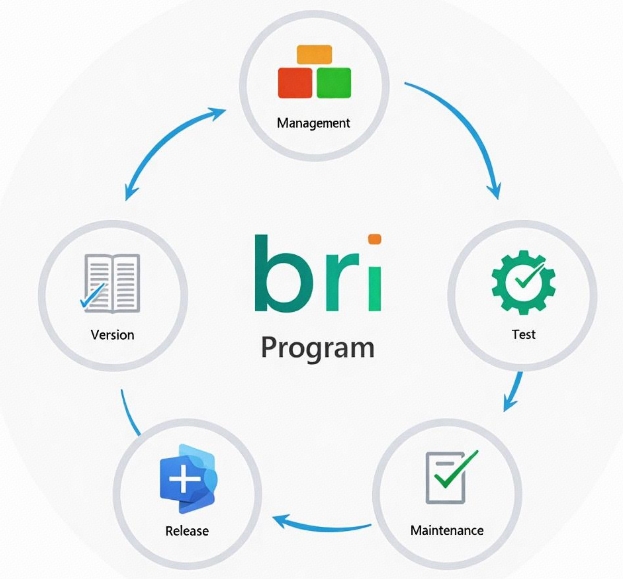Version Control and Update Strategies in Mini-Program Development
- latest articles
- 1.DApp Development & Customization: Merging Diverse Market Needs with User Experience 2.Analysis of the Core Technical System in DApp Project Development 3.How to achieve cross-chain interoperability in Web3 projects? 4.How does the tokenization of points reconstruct the e-commerce ecosystem? 5.How to Set and Track Data Metrics for a Points Mall? 6.What is DApp Development? Core Concepts and Technical Analysis 7.Inventory of commonly used Web3 development tools and usage tips 8.Development of a Distribution System Integrated with Social E-commerce 9.Six Key Steps for Businesses to Build a Points Mall System 10.What is DApp Development? A Comprehensive Guide from Concept to Implementation
- Popular Articles
- 1.Future Trends and Technology Predictions for APP Development in 2025 2.Analysis of the DeFi Ecosystem: How Developers Can Participate in Decentralized Finance Innovation 3.From Zero to One: How PI Mall Revolutionizes the Traditional E-commerce Model 4.DAPP Development | Best Practices for Professional Customization and Rapid Launch 5.Recommended by the Web3 developer community: the most noteworthy forums and resources 6.How to Develop a Successful Douyin Mini Program: Technical Architecture and Best Practices 7.From Cloud Computing to Computing Power Leasing: Building a Flexible and Scalable Computing Resource Platform 8.Shared Bike System APP: The Convenient Choice in the Era of Smart Travel 9.How to Create a Successful Dating App: From Needs Analysis to User Experience Design 10.From Design to Development: The Complete Process of Bringing an APP Idea to Life
In the modern mobile internet ecosystem, mini-programs have gradually become an important carrier for enterprises and developers to innovate applications and services, thanks to their lightweight, fast, and no-download installation features. With the widespread adoption of mini-programs and the continuous expansion of business, efficiently managing and controlling mini-program versions, promptly pushing new features, and fixing issues in older versions have become significant challenges for developers and teams.
In mini-program development, version control and update strategies are key to ensuring smooth operation and continuous improvement and optimization. This article will explore in detail version control, update strategies, and how to reasonably address these challenges in mini-program development.
1. What is Version Control for Mini-Programs?
Version control refers to managing and recording all modifications during the development process of a mini-program, ensuring developers can track changes in each version and roll back to a previous stable version when necessary. It typically relies on version control tools, with the most common ones including Git and SVN.
In mini-program development, version control is not just about code management; it involves the following aspects:
1.1 Code Version Management
By using version control tools, developers can divide code into multiple versions, each corresponding to a specific state. This allows development teams to track changes in each commit, record the addition and modification of features, and the fixing of bugs, ensuring code quality and traceability.
1.2 Configuration File Management
Mini-program development involves not only code writing but also updates to configuration files. For example, changes in API interfaces, adjustments to permission configurations, and modifications to database structures all need to be clearly recorded in version management. Configuration files are a core component of the system, making their version control equally crucial.
1.3 Client and Server Version Control
Mini-program development involves not only client-side code but also backend services and data interfaces. During version updates, version control for both the frontend and backend must be synchronized. For instance, when the client-side changes in how it calls interfaces, the server must ensure forward compatibility of the interfaces or use versioned interfaces to support the normal operation of older client versions.
2. Challenges in Mini-Program Updates
Updating a mini-program is more than just increasing the version number; it involves ensuring a smooth transition for users from old to new versions, guaranteeing the quality of new features, and efficiently releasing and pushing versions.
2.1 Dependency Issues in Version Management
During development, different versions of a mini-program may have dependencies on certain features. For example, a feature might rely on a specific SDK version or a particular interface version. Improper updates can lead to compatibility issues, causing the mini-program to malfunction. Therefore, ensuring compatibility between different versions, especially in managing dependencies and interfaces, is crucial.
2.2 User Experience Issues
Updates to mini-programs often impact user experience. Whether enhancing features or fixing bugs, developers must ensure users can transition seamlessly when a new version is released. For instance, significant changes in UI design might disrupt user habits, leading to inconvenience. To avoid this, developers need to carefully consider differences in user experience between versions and aim for gradual updates to help users adapt.
2.3 Technical Debt from Upgrades
Technical debt refers to temporarily adopting suboptimal technical solutions or imperfect code implementations due to time and resource constraints during development. This "debt" can accumulate in future versions, requiring more effort to fix during updates. To prevent technical debt from hindering updates, development teams need to identify and resolve these issues promptly within version control.
3. Best Practices for Version Control
To effectively manage version control and updates in mini-program development, development teams should follow some best practices to ensure version stability and maintainability.
3.1 Using Branch Management
In mini-program development, branch management is commonly used to handle the development of different features and versions. The main branch (Master) typically stores the release code, while the development branch (Develop) is used for feature development. In practice, when developers need to work on a new feature, they can create a new feature branch from the main branch and merge it back after completion.
This ensures the main branch remains stable, preventing new feature development from affecting existing functionality. The core idea of branch management is "maintaining stability in the main branch while allowing flexibility and innovation in development branches."
3.2 Standardized Version Number Management
Version numbers for mini-programs should follow specific rules, such as using a "major.minor.patch" format. The major version number increases with significant updates, while minor and patch versions indicate smaller feature updates and bug fixes. Standardized version numbers help development teams clearly understand changes between versions and allow users to quickly identify the version they are using.
3.3 Using Automated Tools for Version Management
As project size increases, manually updating and managing versions becomes extremely complex. Therefore, many development teams use automated tools for version management. For example, employing CI/CD (Continuous Integration and Continuous Delivery) tools to automate the version release process can significantly improve development efficiency and reduce human errors.
3.4 Implementing Gray Release Strategies
Gray release is a highly effective strategy during mini-program updates. It involves rolling out new versions to users in batches rather than updating all users at once. This allows developers to test the stability and compatibility of the new version in a real environment, avoiding system crashes or severe user experience issues due to large-scale updates.
Through gray release, developers can gradually optimize the new version based on user feedback and data, ensuring its stability before a full rollout to all users.
4. Formulating Mini-Program Update Strategies
An effective mini-program update strategy helps developers ensure continuous improvement and stability with each update. Here are some key elements to consider when formulating an update strategy.
4.1 Determining Update Frequency
The frequency of mini-program updates should be adjusted based on business needs and user feedback. For minor fixes or optimizations, a higher update frequency may be appropriate, while major version updates might follow a longer cycle. Overall, overly frequent updates may disrupt the user experience, while infrequent updates could cause missed market opportunities.
4.2 User Feedback Mechanism
User feedback is a critical basis for optimizing and updating mini-programs. Developers can analyze user reviews, questions, and feedback to quickly identify issues and user needs. During version control and updates, developers should prioritize user feedback and make targeted updates accordingly.
4.3 Exception Monitoring and Rollback Mechanisms
When releasing a new version, developers must thoroughly monitor the mini-program to detect anomalies promptly. If serious issues are found in the new version, a rollback mechanism should be activated immediately to restore users to a stable older version. This approach minimizes business interruptions caused by version updates.
5. Conclusion
Version control and update strategies in mini-program development are essential for ensuring stable operation and continuous growth. Through proper version management, scientific update strategies, and timely user feedback, developers can keep mini-programs competitive in a rapidly changing technological environment and provide users with a better experience. In the future, as mini-program features continue to expand and technology advances, version control and update strategies will become indispensable core components of mini-program development.
-

How to Increase User Stickiness and Activity Through Mini Program Development
With the development of the internet and mobile internet, mini-programs, as an e···
-

How can mini-program development assist in corporate marketing and e-commerce transformation?
In today's rapidly evolving mobile internet landscape, corporate marketing and e···
-

Offline Functionality Design and Data Synchronization in Mini-Program Development
With the rapid development of mobile internet, mini-programs, as a lightweight a···

 Blockchain
Blockchain












